 Previous Article
Previous Article
The Ultimate Guide to Choosing Composite Decking
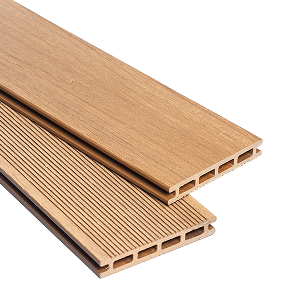
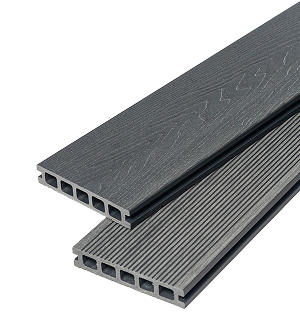
Is your old wooden deck looking tired, worn, or starting to rot? Whether it’s five or fifteen years old, all timber decking eventually succumbs to the UK weather. The constant cycle of rain and sun leads to splintering, warping, and decay, turning a once-loved space into a high-maintenance headache.
Upgrading to composite decking is the ideal, long-term solution. It’s an eco-friendly material that offers superior performance in moisture, fade, and stain resistance. But the big question is: can you simply replace your old timber boards without replacing the entire structure?
This guide will walk you through that critical decision, explaining what parts of your old deck, if any, can be safely reused.
This is the first question every homeowner asks when considering an upgrade. The answer depends entirely on the condition of your existing subframe. There are two very different scenarios you may encounter.
We are sometimes asked if new composite boards can be laid directly on top of an old timber deck to save time. Our expert advice is to never do this.
Your new composite decking requires adequate ventilation underneath the boards to prevent moisture build-up, which leads to mould and mildew. Laying boards directly on top of an old deck traps this moisture, creating a perfect breeding ground for rot and compromising the structural integrity of both the old and new deck. It’s a “false economy” that will cause major problems down the line.
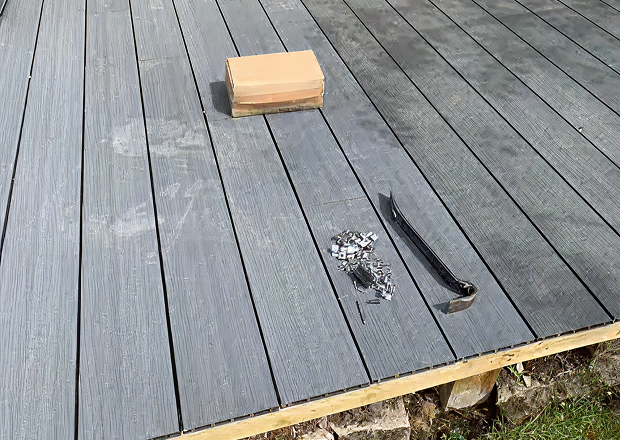
This is a much more realistic option, but only if your existing subframe is in perfect condition. Before you even consider this, you must perform the following three-point inspection. This is the most important part of the entire project.
Are the joists and posts still perfectly solid, with no signs of rot or insect damage?
Take a screwdriver and firmly probe the joists and posts in several places, especially near the ground or in damp-looking areas. If the screwdriver sinks in easily or the wood feels soft and spongy, the timber is rotting and must be replaced. A sound frame will feel hard and solid.
Visually examine all framework components—beams, joists, and ledger boards—for other signs of damage. Look for darker areas (a sign of moisture), significant cracks, crumbles, or any warping.
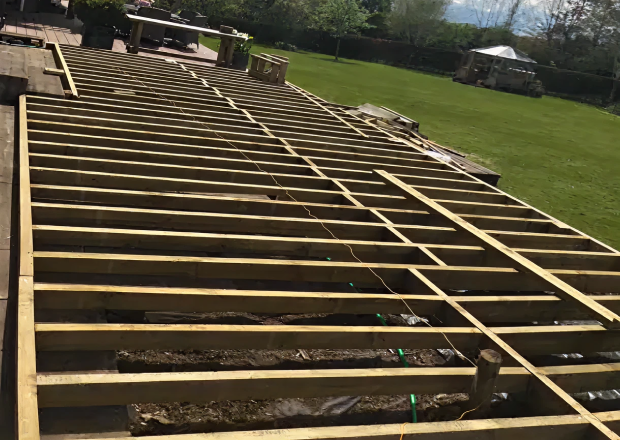
Your new composite boards need the correct support to prevent them from sagging or “bouncing” underfoot.
Take a tape measure and measure the distance between the centre of one joist and the centre of the next. Many older wooden decks were built with a wide spacing of 450mm or even 500mm. To be fully supported and compliant with its warranty, modern composite decking requires joist centres of no more than 300mm. If your current spacing is wider than this, the subframe is not suitable and will need to be rebuilt or have extra joists added.
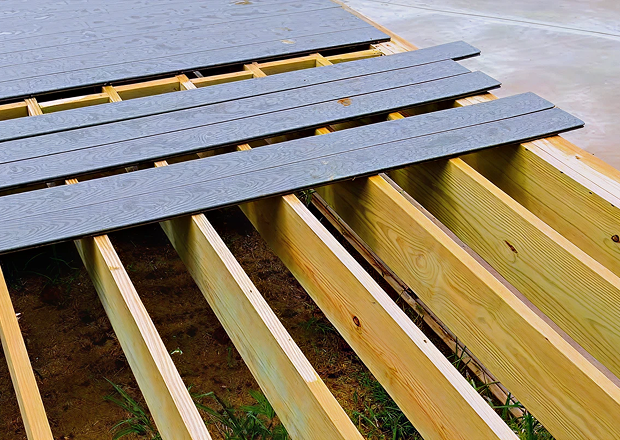
Your subframe must have a slight slope to allow water to drain away from your property.
Place a spirit level across the joists. There should be a slight, consistent gradient of at least 1% (a 1cm drop for every 1m of length) running away from your house. If it’s perfectly flat or, even worse, slopes towards your house, it needs to be corrected.
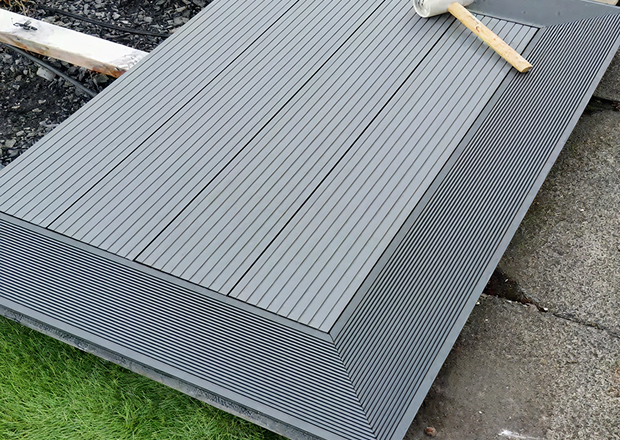
The decision to reuse your subframe depends entirely on the condition revealed by your inspection. Reusing a frame that is in poor condition is a “false economy” that will only cause issues in the long run.
However, let’s assume it passes the inspection, and you don’t need a new frame. While this saves a significant amount on timber and labour, you still need to budget for the key components of the new deck surface. This includes the cost of your new composite boards, modern hidden fasteners (which provide a much better finish than old screws), and any finishing trims like fascia’s or bullnose boards to give the project a professional look.
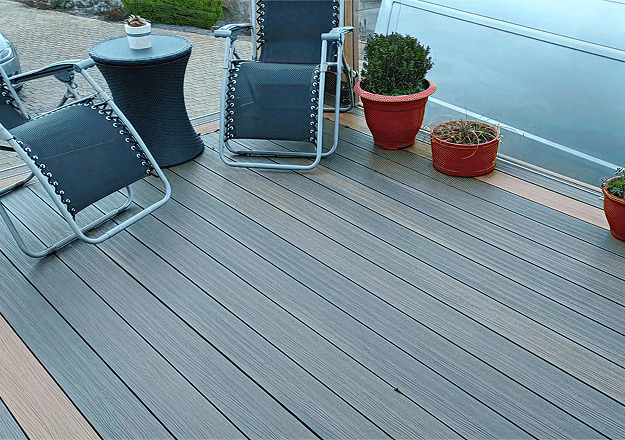
Choosing to upgrade from wood to composite decking is an investment that pays for itself over time. While the upfront cost is higher, the savings on annual maintenance (no more sanding, staining, or sealing) mean that a composite deck often becomes the more cost-effective option within just 5-7 years.
When it comes to the subframe, do not cut corners to save money. A solid, correctly built, and properly protected subframe is the most important part of any deck. It is the skeleton that guarantees longevity, peace of mind, and safety for you and your family for decades to come.
While reusing a subframe is possible if it passes the rigorous 3-point inspection, the ultimate solution for guaranteed performance is always a new composite deck on a new, correctly built subframe. This ensures a flawless finish, full warranty compliance, and decades of low-maintenance enjoyment.
 Previous Article
Previous Article
The Ultimate Guide to Choosing Composite Decking

Ultimate Guide to Maintaining & Cleaning Your Composite Decking